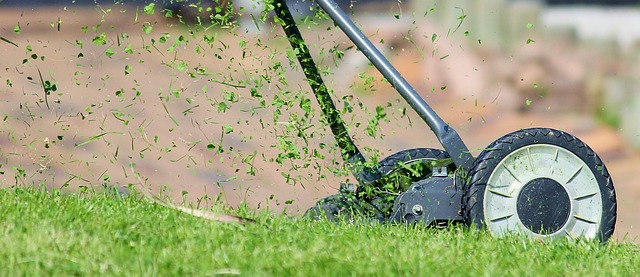John Deere Lawn Mower Guide: Models, Operation, Maintenance, and Safety
John Deere has established itself as a trusted name in lawn care equipment, offering a comprehensive range of mowers designed to meet diverse landscaping needs. From compact residential models to robust commercial-grade machines, understanding the various options, proper operation techniques, and maintenance requirements can help you maximize your investment and achieve professional-quality results in your lawn care routine.

John Deere lawn mowers represent decades of engineering excellence and innovation in outdoor power equipment. Whether you’re maintaining a small suburban yard or managing extensive commercial properties, selecting and properly maintaining the right mower can significantly impact both efficiency and lawn health outcomes.
Understanding John Deere Mower Families and Key Features
John Deere organizes its mower lineup into distinct families, each engineered for specific applications and user requirements. The X300 series caters to homeowners with smaller properties, featuring easy-start engines and comfortable seating for routine maintenance tasks. The X500 series provides enhanced power and cutting deck options for medium-sized properties, while the X700 series delivers commercial-grade performance with heavy-duty transmissions and premium comfort features.
Zero-turn mowers like the Z300 and Z500 series offer superior maneuverability around obstacles and landscaping features. These models incorporate independent wheel motors and intuitive steering controls, allowing operators to navigate tight spaces and achieve precise cutting patterns. Commercial walk-behind models provide durability and efficiency for professional landscaping crews working on varied terrain conditions.
Choosing the Right Deere Mower for Your Lawn Size and Terrain
Selecting an appropriate John Deere mower requires careful consideration of property size, terrain characteristics, and intended usage patterns. Properties under one acre typically benefit from compact tractors with 38-42 inch cutting decks, providing adequate coverage without excessive machine size. Larger properties exceeding two acres often require 48-54 inch decks or zero-turn models to maintain efficiency and reduce cutting time.
Terrain evaluation plays a crucial role in mower selection. Flat, open areas favor traditional lawn tractors with comfortable seating and straightforward operation. Properties with slopes, trees, or landscaping obstacles benefit from zero-turn mowers offering enhanced maneuverability. Hills exceeding 15-degree inclines may require specialized traction features or alternative cutting approaches for safety considerations.
Basic Operation, Safety Checks, and Pre-Start Procedures
Proper operation begins with comprehensive pre-start inspections ensuring safe and reliable performance. Check engine oil levels, fuel quality, and air filter condition before each use. Inspect cutting blades for damage, wear, or debris accumulation that could affect cutting quality or create safety hazards. Verify that all safety switches, including seat switches and blade engagement mechanisms, function correctly.
Starting procedures vary by model but generally involve engaging the parking brake, ensuring the cutting deck is disengaged, and following manufacturer-specified startup sequences. Modern John Deere mowers incorporate multiple safety systems preventing accidental starts or unsafe operation conditions. Familiarize yourself with emergency shutdown procedures and blade engagement controls before beginning cutting operations.
Routine Maintenance, Blade Care, and Seasonal Storage Tips
Regular maintenance extends mower lifespan and ensures consistent performance throughout the cutting season. Engine oil changes typically occur every 50 operating hours or annually, whichever comes first. Air filters require cleaning or replacement based on operating conditions, with dusty environments necessitating more frequent attention. Spark plug replacement and fuel system maintenance should follow manufacturer recommendations.
Blade maintenance directly impacts cutting quality and lawn health. Sharp blades create clean cuts promoting grass recovery, while dull blades tear grass creating brown edges and disease susceptibility. Professional blade sharpening or replacement should occur at least annually or when cutting quality deteriorates. Proper blade installation requires correct torque specifications and safety procedures.
Seasonal storage preparation protects your investment during extended non-use periods. Fuel stabilizer addition prevents fuel system degradation, while complete fuel system draining offers alternative protection. Clean cutting decks prevent corrosion and debris accumulation. Battery maintenance, including disconnection or trickle charging, ensures reliable spring startup.
| Model Series | Cutting Deck Size | Price Range | Key Features |
|---|---|---|---|
| X300 Series | 38-48 inches | $2,500-$4,000 | Side-by-side seating, easy operation |
| X500 Series | 48-54 inches | $4,500-$7,000 | Enhanced comfort, larger fuel capacity |
| X700 Series | 48-60 inches | $7,500-$12,000 | Commercial features, heavy-duty build |
| Z300 Series | 42-48 inches | $4,000-$6,500 | Zero-turn maneuverability, compact design |
| Z500 Series | 48-60 inches | $6,500-$10,000 | Professional zero-turn, enhanced durability |
Prices, rates, or cost estimates mentioned in this article are based on the latest available information but may change over time. Independent research is advised before making financial decisions.
Troubleshooting Common Problems and When to Contact a Dealer
Common operational issues often have straightforward solutions that owners can address independently. Engine starting problems frequently relate to fuel quality, spark plug condition, or air filter restrictions. Cutting quality issues typically stem from blade condition, deck height settings, or ground speed adjustments. Uneven cutting patterns may indicate tire pressure variations, deck leveling needs, or blade wear patterns.
Electrical system problems, including safety switch malfunctions or charging system failures, often require professional diagnosis and repair. Transmission issues, particularly in hydrostatic systems, typically exceed owner maintenance capabilities and warrant dealer attention. Engine performance problems beyond basic maintenance items should receive professional evaluation to prevent costly damage.
Warranty considerations also influence repair decisions. Attempting unauthorized repairs may void warranty coverage, making dealer service the preferred option for newer equipment. Authorized dealers possess specialized tools, technical training, and genuine parts access ensuring proper repairs and continued warranty protection.
Proper John Deere mower selection, operation, and maintenance create the foundation for years of reliable lawn care service. Understanding model differences, following safety procedures, and maintaining regular service schedules maximize both performance and equipment longevity while ensuring safe operation for all users.




